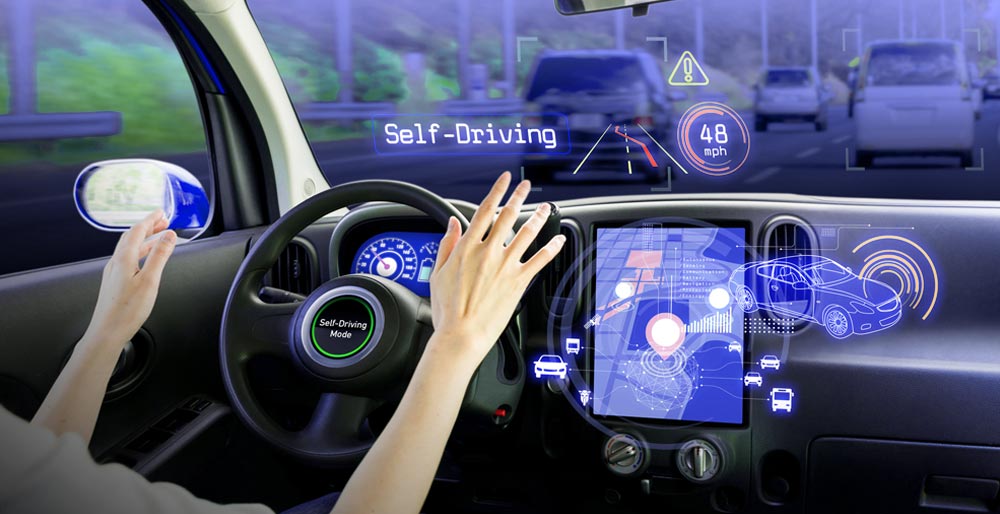Adaptive driving aids play a crucial role in empowering individuals with disabilities to regain their independence and mobility on the road. Designers create these innovative devices and modifications to accommodate various physical limitations and allow individuals to operate a vehicle safely and comfortably. Adaptive driving aids provide customized solutions for drivers with different needs, including hand controls, electronic accelerators, and steering adaptations. In this comprehensive guide, we will explore the different types of adaptive driving aids available, their features, and the advantages they provide.
Understanding Adaptive Driving Aids
Adaptive driving aids refer to a variety of devices and modifications that help individuals with disabilities overcome physical limitations and operate a vehicle effectively. Vehicle manufacturers design aids to enhance accessibility and ensure driver safety through customized controls. Customized adaptive driving aids enable safe and independent driving for individuals with limited hand or foot motions, as well as those with reduced strength or range of movement.
The Benefits of Adaptive Driving Aids
Integrating adaptive driving aids into a vehicle can offer numerous advantages for individuals with disabilities. Some of the key benefits include:
- Independence: Adaptive driving aids empower individuals to regain their independence and freedom by enabling them to drive without relying on assistance from others.
- Enhanced Safety: These aids are designed to improve safety on the road by ensuring that individuals can operate a vehicle comfortably and effectively, reducing the risk of accidents.
- Customized Solutions: Adaptive driving aids can be tailored to meet the unique needs of each individual, providing personalized modifications that accommodate specific disabilities and limitations.
- Improved Accessibility: By adapting the vehicle’s controls, adaptive driving aids make driving accessible for individuals with various physical disabilities, allowing them to overcome barriers and enjoy the freedom of the open road.

Types of Adaptive Driving Aids
There are various types of adaptive driving aids available, each designed to address specific limitations and provide customized solutions. Let’s explore some of the most common types of adaptive driving aids and their functions:
1. Hand Controls
Hand controls assist individuals with limited lower body mobility or strength and are one of the most common types of adaptive driving aids. These controls allow individuals to operate the accelerator and brake using their hands, eliminating the need for foot pedals. There are several types of hand controls available:
- Push Pull Hand Controls: With push-pull hand controls, individuals use a lever that can be pushed or pulled to engage the accelerator and brake functions. This type of control requires upper body strength and grip strength to operate effectively.
- Radial Hand Controls: Radial hand controls involve pushing down or away from the driver to operate the accelerator or brake. This type of control requires less grip strength and can be suitable for individuals with limited upper body strength.
- Feeny and Johnson Hand Controls: These controls feature two levers mounted under the steering wheel, one for the accelerator and one for the brake. They require minimal force and are ideal for individuals with limited upper body strength.
2. Electric Accelerators
Designers designed electric accelerators to alleviate the physical effort required to maintain constant pressure on the accelerator pedal. They utilize electronic triggers or sensors to activate the accelerator function, reducing the strain on the driver’s foot. Some common types of electric accelerators include:
- Electric Throttle and Push Brake: This system combines a traditional push-pull hand control for braking with an electronic trigger for the accelerator. The electronic trigger requires minimal force and movement to operate effectively.
- Electric Brake and Accelerator: The electric brake and accelerator system allows individuals to operate both functions with minimal force and movement. The range of movement and required force can be customized to suit the driver’s specific needs.
3. Pedal Modifications
Pedal modifications help those who can use their feet to drive, yet need specific changes to suit their limitations. Some common pedal modifications include:
- Flip Up Accelerator: Designed for individuals who can only use their left leg or foot, the flip-up accelerator involves installing a second accelerator pedal to the left of the brake pedal. Only one pedal is in operation at a time, depending on the driver’s needs.
4. Steering Adaptations
Steering adaptations help individuals with limited strength or range of movement safely steer the vehicle. These adaptations can make steering easier and more comfortable. Some common steering adaptations include:
- Power Steering Lightening: Power steering lightening systems reduce the effort required to turn the steering wheel, making it easier for individuals with limited strength to steer the vehicle effectively.
- Joysteer: Joysteer systems offer digital electronic steering and/or brake and accelerator functions. They provide a range of options, including handlebars, mini wheels, and various joysticks, allowing drivers to steer the vehicle using a method that suits their abilities.
- Space Drive: Space Drive is another digital electronic steering and/or brake and accelerator system that offers similar options to Joysteer. The choice between these systems depends on the driver’s specific requirements.

Choosing the Right Adaptive Driving Aid
Factors affect suitable aids: disability, body areas, strength, movement, needs. It is essential to consult with a certified driving rehabilitation specialist to undergo a thorough evaluation and receive personalized recommendations. Here are a few key considerations when choosing adaptive driving aids:
- Specific Disability: Identify the specific disability and understand the limitations it presents in relation to driving. This will help determine which adaptive driving aids are most suitable.
- Affected Body Areas: Consider which body areas are affected by the disability. For example, if the lower body is affected, hand controls or pedal modifications may be necessary.
- Strength and Range of Movement: Assess the individual’s strength, grip strength, and overall upper body strength. This will help determine which controls are feasible and comfortable to operate.
- Functions Requiring Assistance: Identify the specific driving functions that require assistance, such as acceleration, braking, or steering. This will guide the selection of the appropriate adaptive driving aids.
It is important to note that each individual’s needs and preferences may vary. What works for one person may not be suitable for another. To ensure optimal safety and comfort, it is crucial to consult with a certified specialist to choose the right adaptive driving aids.
Conclusion
Adaptive driving aids offer invaluable support and enable individuals with disabilities to regain their independence and mobility on the road. From hand controls to electric accelerators and steering adaptations, these aids provide customized solutions to accommodate various physical limitations. By integrating adaptive driving aids into vehicles, individuals can drive safely and confidently, enjoying the freedom of the open road. Make sure to consult with a certified driving rehab specialist for personalized recommendations tailored to your needs. With the right adaptive driving aids, you can enhance your independence and experience the joy of driving once again.
Disclaimer: The information provided in this guide is for educational purposes only and should not replace professional advice from a certified driving rehabilitation specialist. The author and publisher are not responsible for any actions taken based on the information provided. Please consult with a certified specialist for personalized recommendations.









